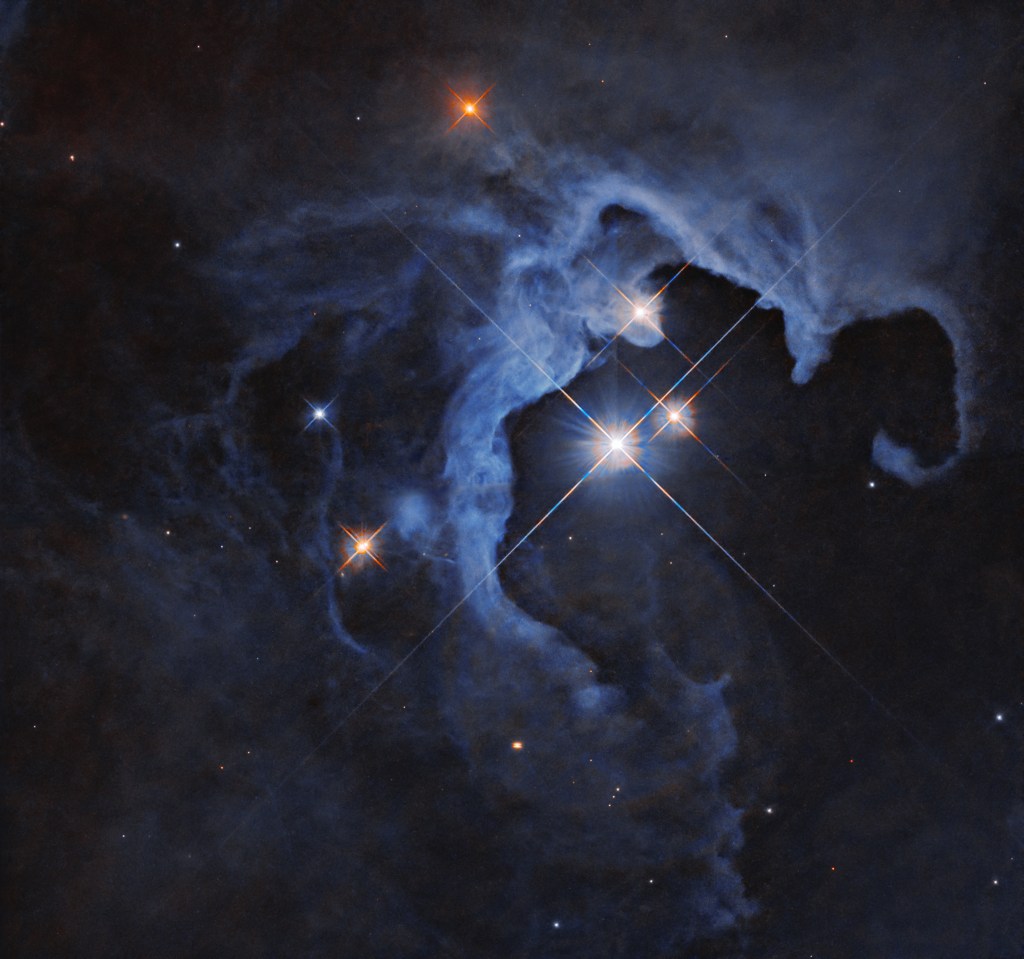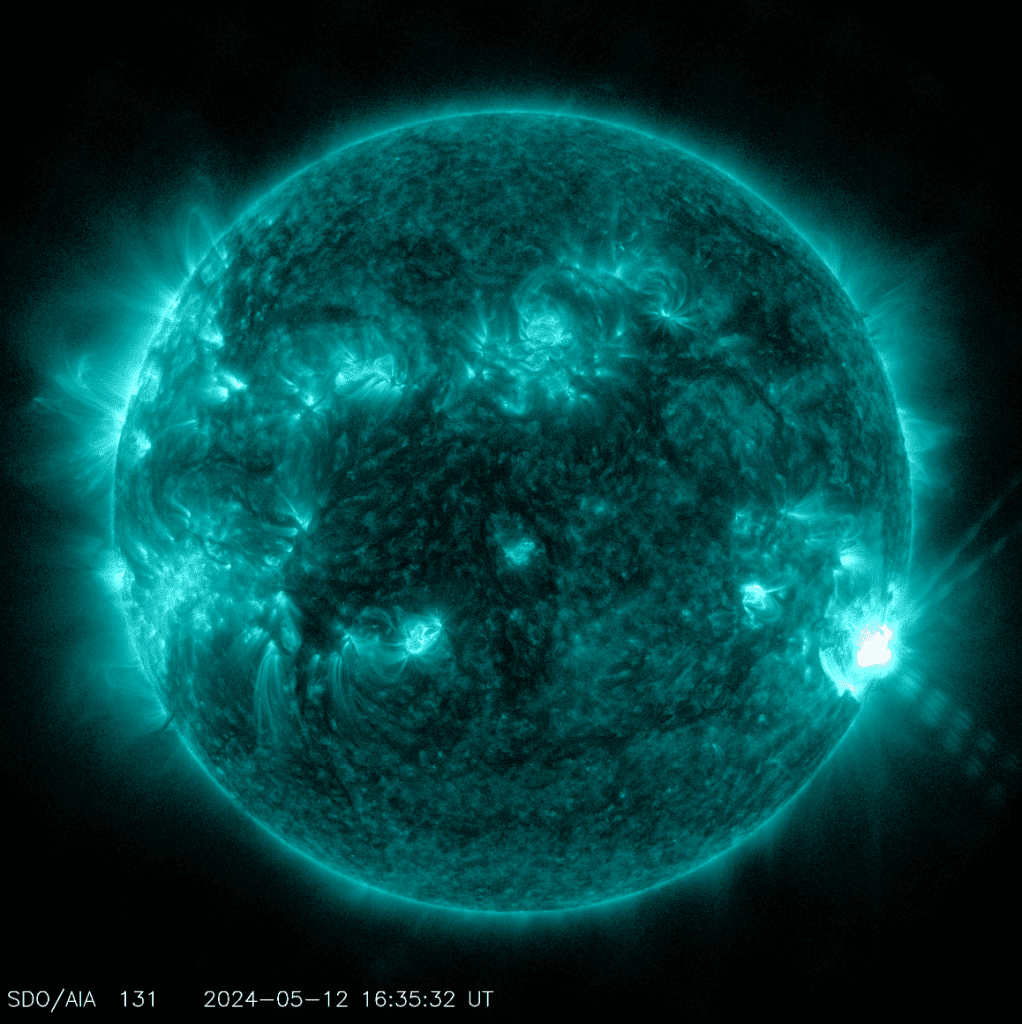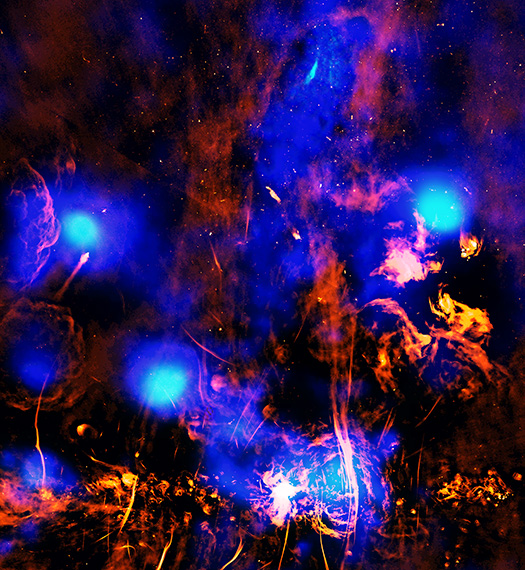The NASA/ESA Hubble Space Telescope has captured a breathtaking image of the barred spiral galaxy NGC 3059, located approximately 57 million light-years from Earth. This observation was part of an extensive study conducted in May 2024 using Hubble’s Wide Field Camera 3. The study focused on various galaxies, employing a range of specialized filters […]
Posts
Exploring the Potential for Life: Webb’s Hunt for Biosignatures on Hycean Worlds and Beyond.
This infographic compares three classes of stars in our galaxy: Sunlike G stars, less massive and cooler K dwarfs, and even fainter, cooler reddish M dwarfs. The habitable zone varies for each star type. In our solar system, the habitable zone starts just beyond Venus’s orbit and nearly reaches Mars. Exoplanets are common in […]
New Strategy to Pinpoint Gravitational Wave Origins Using Gravitational Lensing.
Gravitational wave astronomy has been one of the most exciting developments in recent years, ever since the LIGO consortium officially detected the first gravitational wave (GW) in 2016. This groundbreaking discovery opened up a new window into the universe, allowing astronomers to explore questions previously beyond reach. However, despite detecting 90 GW candidates since […]
The Sun Emitted Two Strong Solar Flares on June 1, 2024.
NASA’s Solar Dynamics Observatory captured images of two solar flares—seen as bright flashes near the center—on June 1. These images show extreme ultraviolet light, highlighting the hot material in flares, colorized in blue and gold. On Saturday, June 1, 2024, the Sun unleashed two powerful solar flares, peaking at 4:48 a.m. and 2:36 p.m. […]
Strong Solar Flare Erupts from the Sun, Captured by NASA.
NASA’s Solar Dynamics Observatory captured this image of a solar flare – seen as the bright flash on the left – on May 31, 2024. The image displays a subset of extreme ultraviolet light that highlights the extremely hot material in flares, colorized in red. On May 31, 2024, at precisely 6:03 p.m. ET, […]

Record-Breaking Galaxy JADES-GS-z14-0 Discovered by Webb Telescope Sheds Light on Early Universe.
Over the last two years, scientists have utilized NASA’s James Webb Space Telescope (JWST) to explore what astronomers call Cosmic Dawn, the period in the first few hundred million years after the Big Bang when the first galaxies formed. These early galaxies provide crucial insights into the evolution of gas, stars, and black holes during […]

NASA’s Lucy Spacecraft Unveils Complex Structures on Asteroid Dinkinesh During Historic Flyby.
Panels a, b, and c each show stereographic image pairs of asteroid Dinkinesh taken by NASA’s Lucy spacecraft’s L’LORRI Instrument around closest approach on Nov. 1, 2023. Yellow and rose dots indicate the trough and ridge features, respectively. These images have been sharpened and processed to enhance contrast. Panel d shows a side view […]

New Evidence of Volcanic Activity on Venus Uncovered in Archival Magellan Data.
This computer-generated 3D model of Venus’ surface shows the volcano Sif Mons, which is exhibiting signs of ongoing activity. Using data from NASA’s Magellan mission, Italian researchers detected evidence of an eruption while the spacecraft orbited the planet in the early 1990s. Direct geological evidence of recent volcanic activity on Venus has been observed […]

NASA Launches First Climate Satellite to Study Polar Heat Emissions.
Rocket Lab’s Electron rocket lifted off from Launch Complex 1 at Māhia, New Zealand at 7:41 p.m. NZST on May 25, 2024 (3:41 a.m. EDT) carrying a small satellite for NASA’s PREFIRE (Polar Radiant Energy in the Far-InfraRed Experiment) mission. The first of two climate satellites designed to analyze heat emissions at Earth’s poles […]

Voyager 1 Resumes Science Data Transmission After Computer Issue.
Voyager 1 has resumed returning science data from two of its four instruments for the first time since a computer issue arose in November 2023. The mission’s science teams are now working to recalibrate the remaining two instruments, with plans to do so in the coming weeks. This marks significant progress toward restoring the […]

Astronomers have discovered a ‘Death Star’ black hole in action.
A team of astronomers has studied 16 supermassive black holes that are firing powerful beams into space, tracking where these beams, or jets, are pointing now and where they were aimed in the past, as reported in our latest press release. Using NASA’s Chandra X-ray Observatory and the U.S. National Science Foundation (NSF) National Radio […]

Hubble Witnesses the Birth of a Sun-Like Star.
This NASA Hubble Space Telescope image captures a triple-star star system. Nestled within a reflection nebula, the trio of stars within this celestial portrait resembles a glittering cosmic geode, emanating a mesmerizing brilliance. At its heart lies the variable star HP Tau, accompanied by its companions HP Tau G2 and HP Tau G3. HP […]

Sun Unleashes X1.0 Solar Flare, NASA Observes.
NASA’s Solar Dynamics Observatory captured an image of a solar flare on May 12, highlighting the extremely hot material in flares with teal-colored extreme ultraviolet light. The Sun unleashed a potent solar flare, reaching its peak at 12:26 p.m. ET on Sunday, May 12. Captured by NASA’s Solar Dynamics Observatory, this event showcased the […]

NASA Chandra has noticed a venting near the center of the galaxy.
The images provide compelling evidence of an exhaust vent connected to a chimney, releasing hot gas from the vicinity of the supermassive black hole at the heart of the Milky Way. Combining X-ray data from NASA’s Chandra X-ray Observatory with radio observations from the MeerKAT telescope reveals a “chimney” structure previously identified using X-ray data. […]

A Supernova Factory in the Depths of Space.
Introduction: In the vast expanse of the cosmos, amidst the twinkling stars and swirling galaxies, lies a celestial wonder known as UGC 9684. Captured by the keen eye of the NASA/ESA Hubble Space Telescope, this spiral galaxy, situated approximately 240 million light-years away in the constellation Boötes, unveils a mesmerizing tapestry of galactic features. In […]
